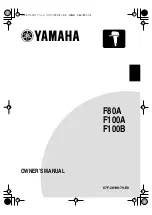NCP1219PRINTGEVB
http://onsemi.com
8
Figure 10. Standby Mode Reconfiguration Circuit
When 5 V is applied to the MC pin, Q6 turns on and R33
is bypassed. In this mode, the voltage divider is set by R31
and R32 only, providing 24 V to the output. If the MC pin is
grounded or floating Q6 is off connecting R33 in series with
R32. This reduces the voltage divider value and sets the
output to 7.25 V.
Loop Stability
The output voltage regulation is provided by the negative
feedback loop described in the previous section. If the
feedback loop is not stable, the converter oscillates. To
ensure the stability of the converter, the closed loop
frequency response phase margin should be greater than 45
°
at the crossover frequency. The first step in stabilizing the
closed control loop is to analyze the frequency response of
the power stage. Its contribution will determine the pole and
zero placement. The gain and pole and zero placement of the
feedback network are selected to achieve the desired
crossover frequency and phase margin.
ON Semiconductor provides the excel based design tool
”FLYBACK AUTO”. It provides an automated method of
compensating the feedback loop of an isolated flyback
converter using the TL431 and an optocoupler. The tool
takes system level inputs from the user, such as bulk input
voltage, output voltage, output current, and controller
switching frequency. A screenshot of the parameter capture
screen is shown in Figure 11.
Figure 11. Screenshot of the Parameter Capture
Screen from the Design Tool FLYBACK AUTO
After the input and output parameters are entered, the
frequency response of the power stage is calculated. The
response is presented both numerically, showing the
frequency of each pole and zero, along with the dc gain of
the power stage and graphically through the use of a Bode
plot. This is shown in the screenshot presented in Figure 12.
Figure 12. Screenshot of the Power Stage Frequency
Response from the FLYBACK AUTO tool
Next, the contribution of the optocoupler to the frequency
response of the system is considered. The pole of the
compensation is selected to be less than that of the
optocoupler. The user enters information about the
optocoupler collected from the datasheet or through
frequency response characterization of the chosen
optocoupler. The optocoupler chosen for the evaluation
board design is a Vishay SFH615A
−
3. Using the test setup
shown in Figure 13, the optocoupler frequency response and
CTR are measured. For the frequency response
measurement, the dc bias of the 2.49 k
W
resistor is adjusted
until the collector of the optocoupler measured 2.5 V.


















